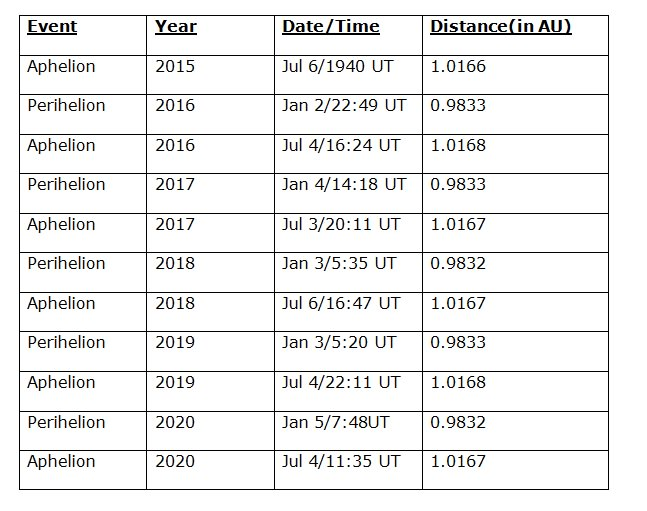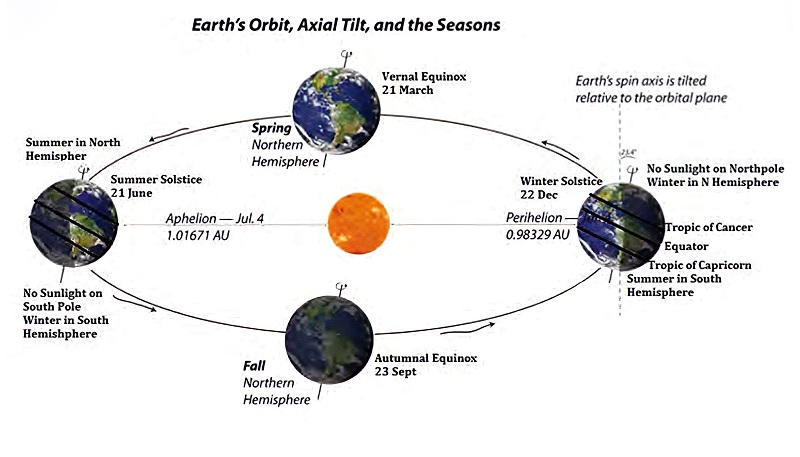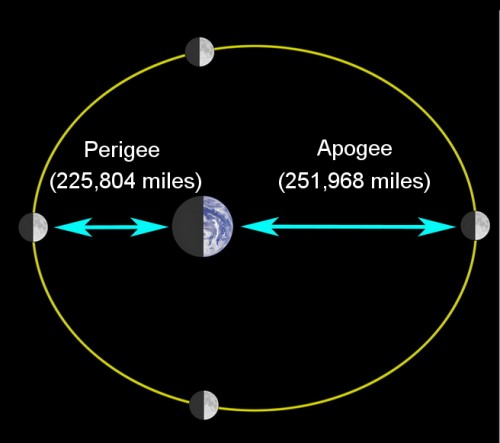Aphelion | 09 Jul 2024
Why in News?
Recently, on 5th July 2024 , Earth reached the farthest point in its elliptical orbit around the sun called aphelion. Earth moves around the sun in elliptical orbit and thus its distance from the sun fluctuates slightly throughout the year.
What is Aphelion?
- About: Aphelion refers to the point in Earth's orbit when it is farthest from the Sun, occurring around 3 to 6th July each year (According to NCERT, Aphelion is on 4th July).
- The Earth's perihelion and aphelion dates are not fixed due to variations in its orbit eccentricity.

- At this juncture, the distance between Earth and the Sun extends to approximately 152.5 million kilometres.
- Perihelion: At Perihelion, Earth is closest to the Sun, occurring around January 3 annually, with a distance of approximately 147.5 million kilometres.
- The Earth's perihelion and aphelion dates are not fixed due to variations in its orbit eccentricity.
-
Significance of Aphelion:
- Variation in Solar Radiation: During early July, Earth's aphelion slightly reduces the sunlight reaching India, but this has a minor impact on temperatures.
- Seasonal changes, due to Earth's tilt, are much more important. The difference in solar radiation caused by Earth's elliptical orbit is only about 3%, showing that seasonal factors are the main influence on India's temperatures, even at aphelion.
- Stability of the Orbit: The aphelion is a natural consequence of Earth's elliptical orbit, which is a result of the gravitational interactions between the planets. Maintaining this slightly elliptical orbit is crucial for the long-term stability of the Earth's climate and habitability.
- Variation in Solar Radiation: During early July, Earth's aphelion slightly reduces the sunlight reaching India, but this has a minor impact on temperatures.
Note
- The Earth's seasons are primarily determined by the tilt of the Earth's axis, not the distance from the Sun.
- The Earth's tilt causes the uneven distribution of solar radiation, leading to the four seasons: spring, summer, fall (autumn), and winter.
Perigee and Apogee
- Perigee is the point in the moon's elliptical orbit that is closest to the Earth. At perigee, the moon is at its smallest apparent size and its gravitational pull on the Earth is strongest.
- Apogee is the point in the moon's elliptical orbit that is farthest from the Earth. At apogee, the moon is at its largest apparent size and its gravitational pull on the Earth is weakest.
Read More: Types of Orbit
UPSC Civil Services, Previous Years Questions (PYQ)
Q. On 21st June, the Sun (2019)
(a) does not set below the horizon at the Arctic Circle
(b) does not set below the horizon at Antarctic Circle
(c) shines vertically overhead at noon on the Equator
(d) shines vertically overhead at the Tropic of Capricorn
Ans: (a)



